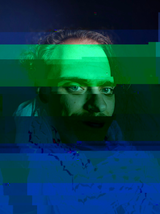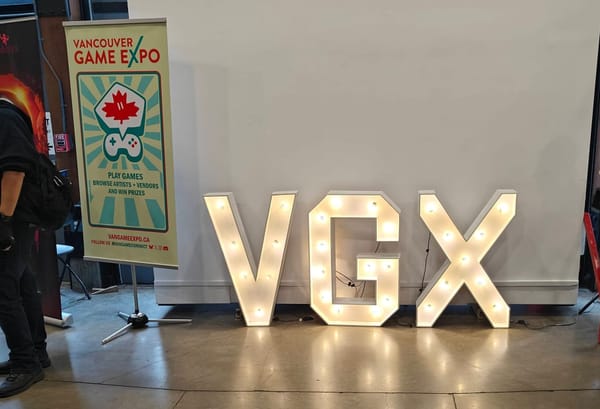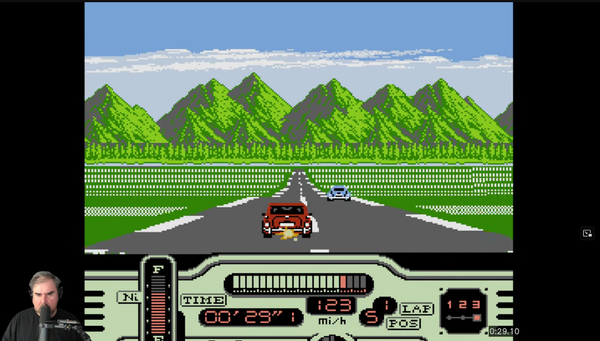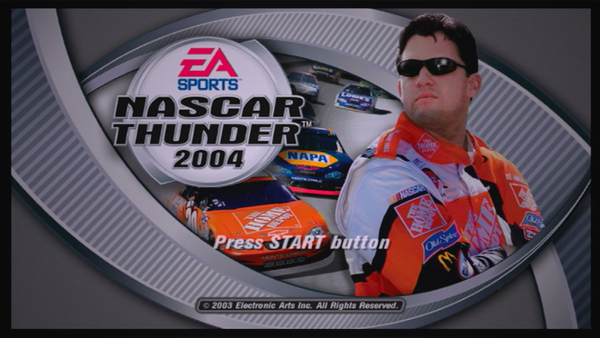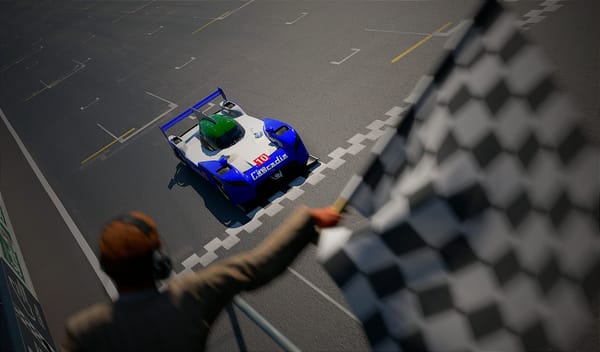Is there NASCAR Life on Mars?
Simply put, we are not racing on Earth anymore.
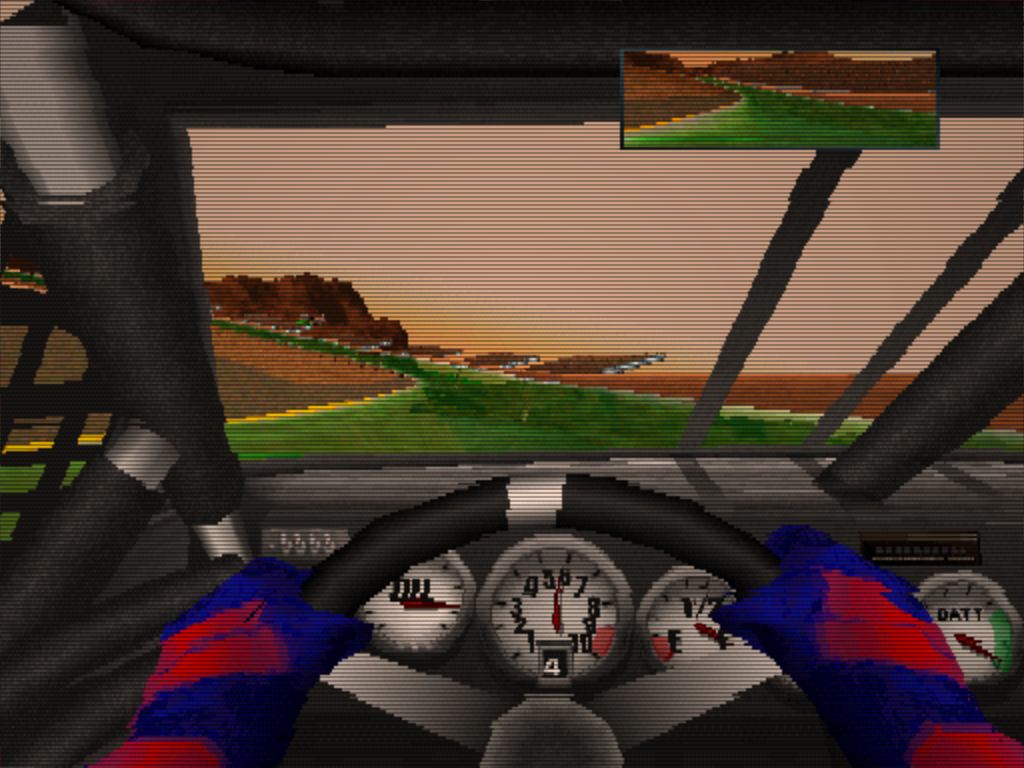
With the upcoming release of NASCAR 25 coming in little mess than a month from now on consoles, a new generation for this subset of the genre is being set to begin that has among the longest, most storied histories within racing games. NASCAR or NASCAR-adjacent titles have existed for over 40 years now, with Richard Petty's Talladega being released on the Commodore 64 and Atari 8-bit computers in 1984 before a couple stock car racing titles would make their way onto the Nintendo Entertainment System at the start of the 1990s. Days of Thunder and Bill Elliot's NASCAR Challenge got the ball rolling on consoles, but it would take for gaming to enter the third dimension before that trickle of games became a flood which would see NASCAR titles stand shoulder to shoulder with the contemporary yearly release sports title.
EA Sports's first NASCAR title would be released mid-1997 and began a decade long partnership that resulted in the later titles being held in the highest regard of all the yearly-released sports titles that were released by Electronic Arts. But before this acclaimed run that started with NASCAR Thunder 2003, the games were still largely in familiar territory in comparison to it's stick and ball counterparts. However, there was an added advantage that was in place for NASCAR games that other licensed sports titles didn't have yet which was first made apparent in NASCAR Racing released by Papyrus in 1994.
The 1990s were a huge decade of growth for NASCAR, with an excellent on-track product and iconic off-track characters that brought the sport to new heights at a time when most other racing disciplines was trying to rediscover their identity after Japan's bubble economy burst and after the deaths of Ayrton Senna and Roland Ratzenberger during the 1994 San Marino Grand Prix weekend. NASCAR was unaffected by these events which helped to focus the business's efforts on breaking through into the mainstream sports consciousness within the United States against the likes of the NFL, NBA, MLB, and the NHL. In order to do so within the world of video games, it meant that getting your license out there as much as you can was a bigger deal than making sure that the one developer you gave the license to was making the video game you wanted them to make. You wanted as many eyeballs on your games in the hope that would then translate into dollars at the race track.
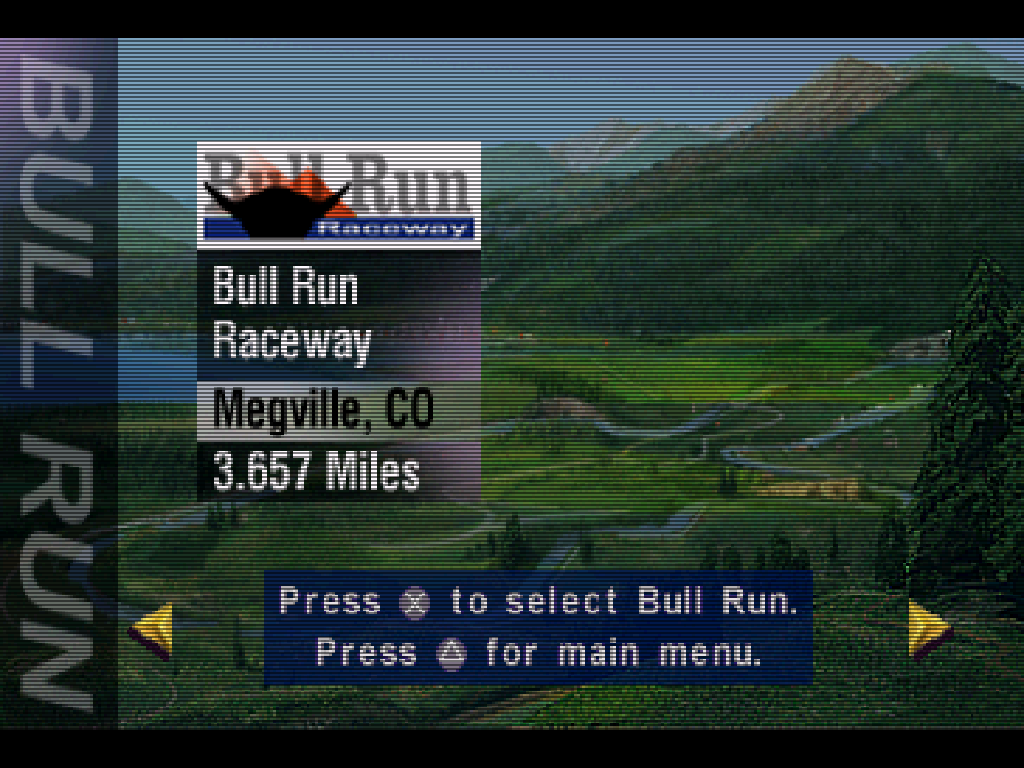
This going wide, rather than going deep, strategy with the official NASCAR license would gave birth to three major NASCAR video game franchises through the 90s and early 2000s, but also meant that those developers didn't have to be as strict with what could be done with the license. Initially with NASCAR Racing, this meant that there was support for mods on PC and custom, fictional tracks made by Papyrus were available for the player across all versions of the game. Additional secondary modes and fictional tracks would make appearances in EA Sport's NASCAR titles, before that explosive expansion to go beyond just having a season mode as the mode to play took place took place in the mid-2000s. These early tracks never stayed in the consciousness compared to their later counterparts like the Dodge Raceway Stadium or the Old Spice High Endurance Speedway, but these older tracks are still remain great for racing with one in particular standing out above the rest.
From the basic track stats, it might be the most straightforward fictional track in an Electronic Arts NASCAR title. It's a two mile long D-shaped oval, with 18 degrees of banking in the turns, 12 degrees of banking on the front straight, and 5 degrees on the back straight. Those are the same basic fundamentals as the Michigan International Speedway, however you are now entering the corners at 225 miles per hour rather than barely grazing the 200 mph mark. Such speeds have have only been seen at Michigan International Speedway in a ChampCar or during an infamous NASCAR test at Michigan in 2014 where drivers were hitting those speeds entering turn 1 when running an extreme low downforce, high horsepower package. We don't have those kind of extremes on our side, but what we do have is a thinner atmosphere to work with and the decreased wind resistance that it provides. Simply put, we are not racing on Earth anymore. Welcome to Mars and the 4th From The Sun Interplanetary Speedway.
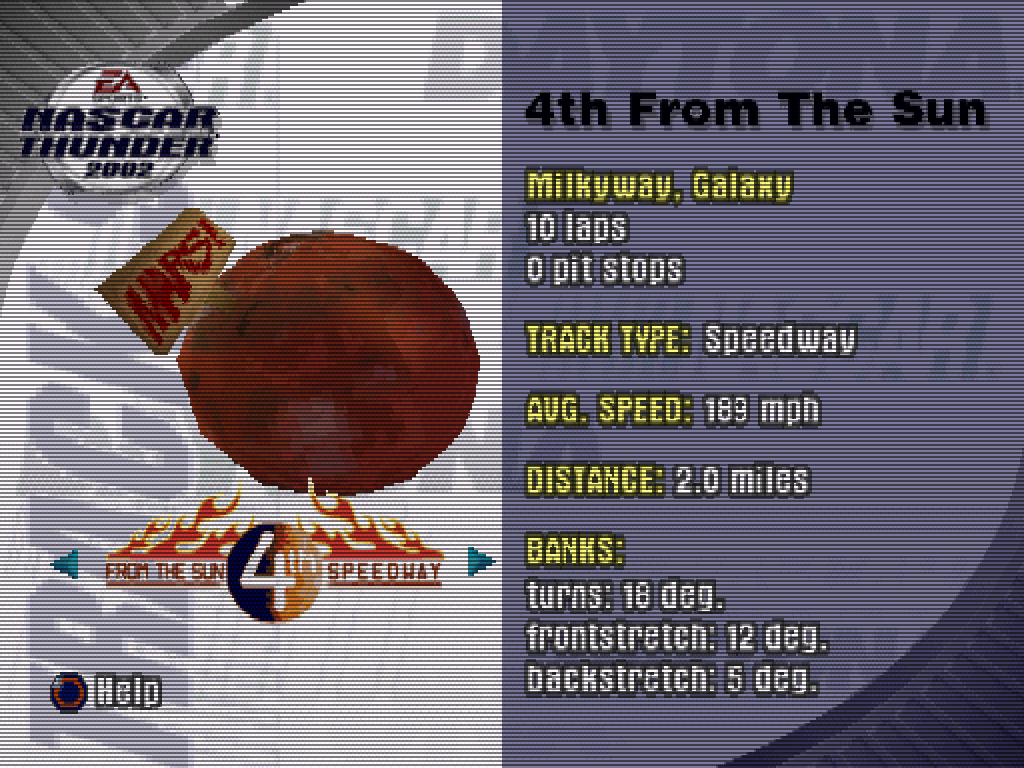
Unlocked via a cheat code in NASCAR 2001 and by getting it's Thunder Card randomly from completing a Thunder Challenge in NASCAR Thunder 2002 on the original Playstation, 4th from The Sun is the only fictional track in these games that was simply a contemporary oval. The Black Box Proving Grounds still races like an oval, but is shaped like a hexagon while the Kansas Dustbowl is the most raw definition of a roval with it's sweeping and very slow S-bend in the middle of it's lap. 4th from The Sun has some of it's back-end settings modified to allow for the higher speeds, while also allowing the track to be driven at full throttle the entire lap. It now races like a superspeedway pack race but at a higher top speed akin to iRacing Superspeedway, but with a much more forgiving track profile and layout. Such a style of "edit" to modify an existing track to provide a new experience more resembles something that's commonplace in the modding scene for NASCAR Racing 2003, but the complete visual overhaul to match is a remarkable piece of work by Black Box Games.
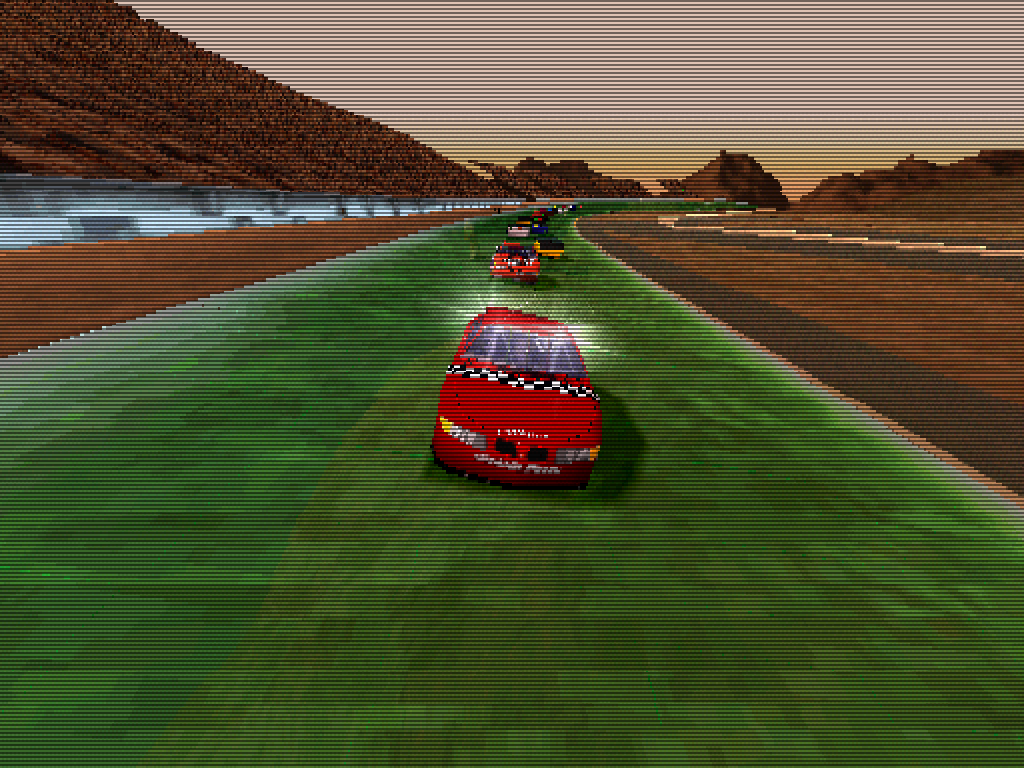
You're racing on a translucent green surface that reveals the fact that the track is on top of a plateau with the oval elevated above it's outer perimeter. Below the track is a sheer drop, with an industrial factory down below behind the back straightaway. The grandstands on the outside of the track are supported by pillars that go underneath the track, with some rocket-powered RVs hovering in the infield of the track, resembling the Eagle 5 from Spaceballs. If you asked an artist to draw what a NASCAR oval on Mars might look like, a more rational and more literal interpretation would probably look pretty close to what Black Box came up with.
These fictional tracks came as EA Sports first started to expand what they were doing with the NASCAR license, after everything in terms of cars and tracks had been put in place prior to NASCAR 2001 sans the inclusion of the Daytona International Speedway. The relative changes year on year, after fully refining the package that used the same engine as the Playstation version of Need For Speed High Stakes, would only come with going to fantasy land and the subsequent inclusion of the Thunder Cards and Thunder Challenges. But after the latter's introduction in NASCAR Thunder 2002 would be the last big change coming to the EA Sports NASCAR titles on the original Playstation, as focus had shifted to the next generation of consoles and the titles being made by EA Tiburon. All the fictional tracks would not make the jump to the new generation either, paving the way for new tracks to take their place with some of the fictional tracks still being available on future releases on the original Playstation.
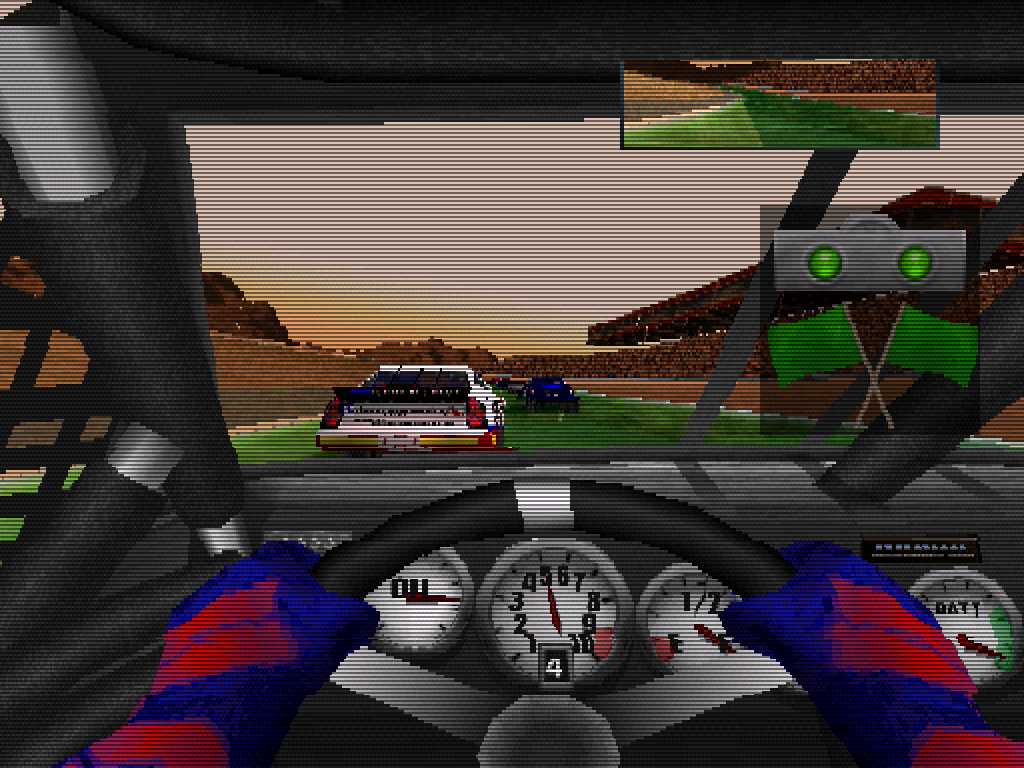
The NASCAR Thunder games that came after 2002 on Playstation are a fascinating dive. They, and the FIFA Soccer games, would keep going on the console and be among the last games published for the console first released thirty years ago. The only real changes were to the driver roster and their respective paint schemes, with some legends or NASCAR Busch Series drivers being added as unlockable rewards. Some of the fictional tracks wouldn't progress into the later PS1 NASCAR Thunder titles either; included in this would be 4th From The Sun Speedway being only a part of NASCAR 2001 and Thunder 2002, giving a particular reason to try out these two games.
Littered throughout the history of racing games, there are multitudes of these small anecdotes and fascinations that were only made possible when that little bit of freedom was given to the developers. When you have a little bit of space to give on the disc after the core of the game is done or the official license allows for that freedom, the reward was games that go the extra mile in bringing the player's imagination to life. Racing games on the original Playstation were especially special for doing this: with Wipeout mode for Formula 1 97, The Room bonus track in Need for Speed III Hot Pursuit, and a forgotten superspeedway amongst the stars in NASCAR Thunder 2002 leading the charge. The latter showed what was possible when a license was willing to take a risk, with the reward being a run of racing games that would stand tall through the 2000s and help a sport's growth into the mainstream in it's own way.
And now, you can go to Mars on NR2003 too.
Oh, man, look at those racecars go. It's the freakiest show.

